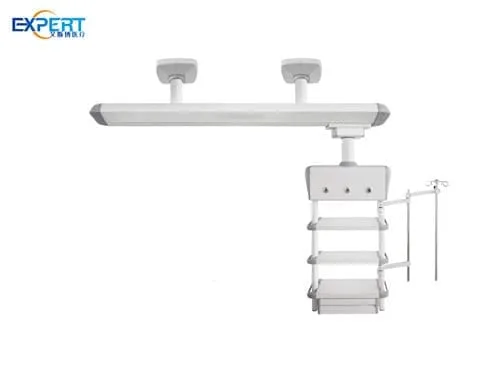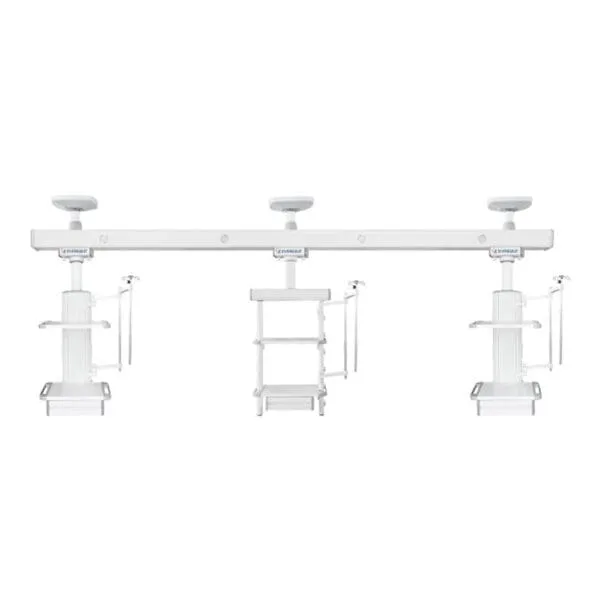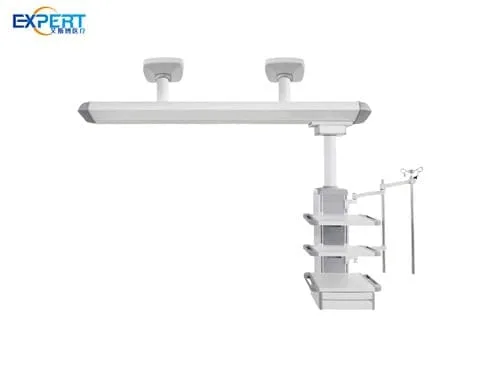عنوان
304 شارع الكاردينال الشمالي
مركز دورتشستر ، ماساتشوستس 02124
ساعات العمل
من الاثنين إلى الجمعة: 7 صباحًا - 7 مساءً
عطلة نهاية الأسبوع: 10 صباحًا - 5 مساءً
مرحباً بكم في مدونتي!
قبل أن نتعمق في المحتوى، إذا كنت مهتمًا بمنتجاتنا أو لديك أي أسئلة، فلا تتردد في زيارة موقعنا اتصل بنا صفحة على موقعنا الإلكتروني. فريقنا جاهز لمساعدتك في أي استفسارات أو طلبات أو أي دعم قد تحتاجه.
لنبدأ رحلتنا معًا. آمل أن تجدوا هذا المحتوى ثريًا وجذابًا وقيّمًا.
Modern hospitals are constantly evolving, and operating rooms (ORs) are at the heart of this transformation. As medical technology advances, healthcare facilities seek safer, more efficient, and more flexible solutions to optimize workflow and patient care. One critical piece of equipment driving this progress is the medical pendant system — a ceiling-mounted device designed to organize and support vital utilities, equipment, and cables.
This article explains what medical pendant systems are, why they’re essential in modern operating rooms, and how hospitals can select and maintain the best system for their specific needs.

A medical pendant system is a ceiling-mounted unit that provides convenient access to medical gases, electrical power, and data connections within an operating room or intensive care unit (ICU). It features one or more articulated arms that allow medical staff to position equipment and devices exactly where they are needed, reducing clutter and improving safety.
In simple terms, a medical pendant acts as a central support hub suspended from the ceiling. It replaces traditional wall-mounted supply units, freeing up valuable floor space and minimizing the risk of tripping hazards.
Typical components include:
By keeping cables and tubes neatly organized, pendant systems reduce cross-contamination and streamline surgical workflow — allowing doctors and nurses to focus on patient care rather than equipment management.
Before ceiling-mounted solutions became standard, medical gas outlets and electrical systems were installed on walls or mobile trolleys. This limited mobility and created cluttered workspaces.
The introduction of ceiling supply units revolutionized hospital design. Modular medical pendant systems now allow hospitals to customize configurations according to the department’s needs, whether it’s anesthesia, endoscopy, or critical care. Today’s systems are more compact, motorized, and fully integrated with digital monitoring technologies.

A modern OR without a pendant system is like a cockpit without proper controls — it can function, but not efficiently.
Pendant systems prevent floor obstructions and cable tangling, significantly reducing the risk of accidents. They are ergonomically designed to minimize strain for surgeons and nurses.
With all utilities centralized overhead, essential equipment is always within reach. This optimizes surgical flow and shortens preparation time between procedures.
By keeping surfaces clear and easy to clean, pendant systems help maintain sterile environments and reduce the risk of hospital-acquired infections.
There are several types of medical pendant systems, each tailored for specific clinical applications:
Choosing the right configuration depends on the space, workflow, and clinical function.
When selecting a pendant system, consider the following essential features:
A well-designed pendant system should offer reliability, flexibility, and user-friendly operation.
Selecting the ideal pendant system requires careful evaluation of several factors:
Proper installation and regular maintenance are key to ensuring the safety and longevity of your medical pendant system.
A well-maintained pendant system can serve reliably for 10–15 years or longer.

The cost of a medical pendant system can vary depending on its type, features, and manufacturer. Factors influencing price include:
Though the initial investment may seem high, the long-term ROI is significant — improved efficiency, reduced downtime, and enhanced safety make it a worthwhile upgrade for any hospital.
أ نظام المعلقات الطبية is more than just a ceiling fixture — it’s a crucial element of modern healthcare design that ensures efficiency, safety, and precision in every surgical procedure. By investing in the right pendant system and maintaining it properly, hospitals can enhance both staff performance and patient outcomes.
What is a medical pendant system used for?
A medical pendant system provides ceiling-mounted support for gas, electrical, and data outlets in operating rooms or ICUs, helping organize equipment and improve workflow efficiency.
What are the main types of medical pendant systems?
The most common types include single-arm, double-arm, and motorized medical pendant systems—each designed for different room sizes and medical applications.
كيف يفعل نظام المعلقات الطبية تحسين سلامة المرضى؟
By keeping cables and hoses off the floor, the pendant system reduces clutter, prevents tripping hazards, and supports infection control in sterile environments.
How often should a medical pendant system be maintained?
It’s recommended to inspect and maintain the system at least twice a year to ensure safe operation and compliance with hospital safety standards.
هل يمكن تخصيص نظام القلادة الطبية؟
Yes, most manufacturers offer modular designs that can be customized with various gas outlets, electrical sockets, drawers, and monitor mounts to fit specific clinical needs.
If you’re unsure which medical pendant system is best for your operating room or ICU setup, our experts are ready to assist. اتصل بنا today for a personalized consultation and discover how our ceiling-mounted solutions can enhance workflow efficiency and safety in your healthcare facility.
Don’t wait to modernize your hospital—get in touch now and create a smarter, safer operating environment for your team and patients!
